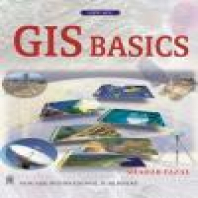It is a simple fact that everything human beings do, do takes place at a certain location on the earth - it has a geographic component, although we tend not to think about it much. The digital information revolution of the late twentieth century has allowed this geographic information to be more easily accessed, analyzed and used than ever before. This led to the development of GIS as a discipline and emergence of GIS as a core of digital technology. Traditionally, the discipline of Geography dealt with spatial description and analysis. Now in the era of multi-disciplinary approach, students, researchers, professionals from different disciplines find their way into the emerging discipline of GIS making it popular. The rapid expansion and popularization of GIS means that now GIS is not just for the specialists, but for everyone, but these GIS users have different requirements. There are numerous amounts of GIS learning material available in the form of textbooks as well as posted on various websites. These literatures in general tend to be rather advanced and designed for specialists while requirements of GIS beginners are somewhat ignored. The present book is an attempt to provide basic fundamentals of GIS for beginners. The book is spread over twelve chapters providing indepth explanations of key concepts, issues and topics which are easy to follow and understand. It also contains wide range of highly effective and explanatory diagrams, tables, boxes and glossary for additional informations on specific topics.
GIS Basics
| Người gửi: | Phí Đình Thảo |
| Ngày đăng: | 03/05/2021 |
| Đánh giá: | |
| Votes: | 0 |
| Nhận xét: | 0 |
| Lượt xem: | 436 |
| Download: | 0 |
| Loại tài liệu: | Free |
Mô tả:
It is a simple fact that everything human beings do, do takes place at a certain location on the earth - it has a geographic component, although we tend not to think about it much. The digital information revolution of the late twentieth century has allowed this geographic information to be more easily accessed, analyzed and used than ever before. This led to the development of GIS as a discipline and emergence of GIS as a core of digital technology. Traditionally, the discipline of Geography dealt with spatial description and analysis. Now in the era of multi-disciplinary approach, students, researchers, professionals from different disciplines find their way into the emerging discipline of GIS making it popular. The rapid expansion and popularization of GIS means that now GIS is not just for the specialists, but for everyone, but these GIS users have different requirements. There are numerous amounts of GIS learning material available in the form of textbooks as well as posted on various websites. These literatures in general tend to be rather advanced and designed for specialists while requirements of GIS beginners are somewhat ignored. The present book is an attempt to provide basic fundamentals of GIS for beginners. The book is spread over twelve chapters providing indepth explanations of key concepts, issues and topics which are easy to follow and understand. It also contains wide range of highly effective and explanatory diagrams, tables, boxes and glossary for additional informations on specific topics.
Mua lượt tải
Tiết kiệm chi phí
Số ngày hết hạn tính theo gói cao nhất còn giá trị
Với nhiều ưu đãi hấp dẫn















